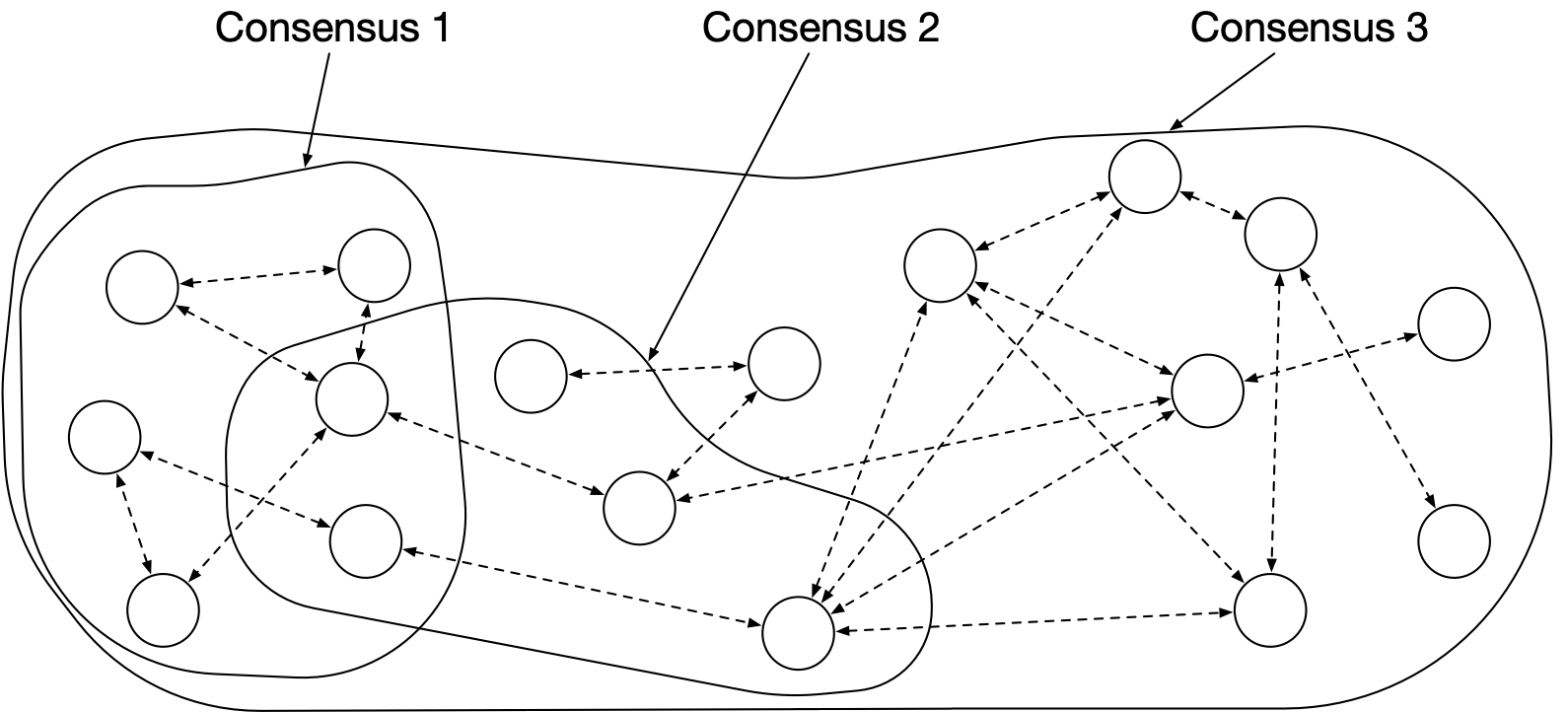Why Openfabric AI?
Until now, we have provided a simplified, high-level overview of protocols, blockchain, and Openfabric AI. However, in the process of simplification, it is possible to overlook crucial details. In reality, certain key features have a significant impact on the technology.
As a developer, it is crucial to conduct thorough research to gain a deep understanding of all the underlying details.
In this section, we will provide an overview of the main concepts and key features that demonstrate how the Openfabric AI protocol operates and why its value proposition is unique, offering a solid evaluation point.
Founding principle
Openfabric AI’s mission is to introduce a powerful and exciting paradigm shift in the way people perceive the field of AI, by creating an ecosystem that sees innovation as its most valuable currency. It aims to provide a medium in which multiple types of participants from all kinds of backgrounds can bring their contributions to the table to achieve success and solve their most complex problems by incorporating the power of AI solutions.
Refined through research
Openfabric AI is a protocol that has been developed with a strong emphasis on scientific research and rigorous validation. The core concepts that form the foundation of Openfabric AI have undergone extensive peer review by the computer science community and have been validated in top research conferences.
This focus on scientific research and validation ensures that Openfabric AI is built on a solid and reliable foundation, providing developers and users with confidence in the protocol's functionality and security. By leveraging the expertise of the computer science community, Openfabric AI is able to integrate cutting-edge research and innovative technologies into its architecture, ensuring that it remains at the forefront of the AI industry.
Research papers:
- The Evolution of Blockchain Virtual Machine Architecture Towards an Enterprise Usage Perspective ( Springer Conference paper )
- Dynamic Consensus: Increasing Blockchain Adaptability to Enterprise Applications ( Springer Conference paper )
- An Ontology Model for Interoperability and Multi-organization Data Exchange ( Springer Conference paper )
- A Decentralized Ontology Versioning Model Designed for Inter-operability and Multi-organizational Data Exchange ( Springer Conference paper )
- Performance Analysis of an Ontology Model Enabling Interoperability of Artificial Intelligence Agents ( Springer Conference paper )
- Openfabric Whitepaper (very technical, detailed)
The consensus protocol
Openfabric AI utilizes dynamic consensus, which is a superset of the traditional POS (proof of stake) consensus architecture. In the dynamic consensus model, a node represents a computing element engaging in multiple consensuses in parallel, and multiple complementary consensus algorithms can run on the same platform. This approach ensures that several decisions covering different topics can be reached in parallel, leading to a faster and more efficient system.
In a distributed system, any component of the network may be faulty at any moment, so the system design should incorporate mechanisms to protect against these faulty nodes. To ensure fault tolerance, Openfabric AI introduces redundancy and replication of information, as well as the capacity to isolate faulty nodes.
The dynamic consensus guarantees byzantine fault resilience by adding replicas in the communication protocol and ensuring a minimal number of nodes on any level of the consensus.

Core features
- Decentralization - Ensure there is no central entity controlling the location of data or information processing
- Usability - Simplify interactions between end-users and AIs by providing straightforward, nontechnical flows
- Security - Protect end-user privacy and guarantee intellectual property rights
- Smart Economy - Create a built-in robust exchange medium that facilitates fair transactions between supply-and-demand of AI services
- Interoperability - Implement the use of standardized interfaces, to allow multiple AI agents to cooperate and connect in order to provide relevant answers to complex problems
- Scalability - Expand network capabilities by allowing network participants to rent their computing power for the execution and training of AIs
In a nutshell
Openfabric AI is a technology that aims to revolutionize the field of Artificial Intelligence (AI) by creating an ecosystem where innovation is highly valued. It provides a platform where people from different backgrounds can contribute and use AI solutions to solve complex problems.
Openfabric AI has been developed through extensive scientific research and validation, ensuring its functionality and security. The protocol incorporates cutting-edge research and technology to stay at the forefront of the AI industry.
One important aspect of Openfabric AI is its consensus protocol, which allows for multiple decisions to be made in parallel, leading to a faster and more efficient system. It also ensures fault tolerance by adding redundancy and replication of information and isolating faulty nodes.
Openfabric AI has several core features, including decentralization to avoid central control, usability to simplify interactions with AI, security to protect privacy and intellectual property, a smart economy for fair transactions, interoperability for collaboration between AI agents, and scalability by utilizing the computing power of network participants.
Overall, Openfabric AI offers a unique value proposition by combining research-backed development, innovative consensus protocols, and essential features that make AI more accessible and beneficial for various users.

